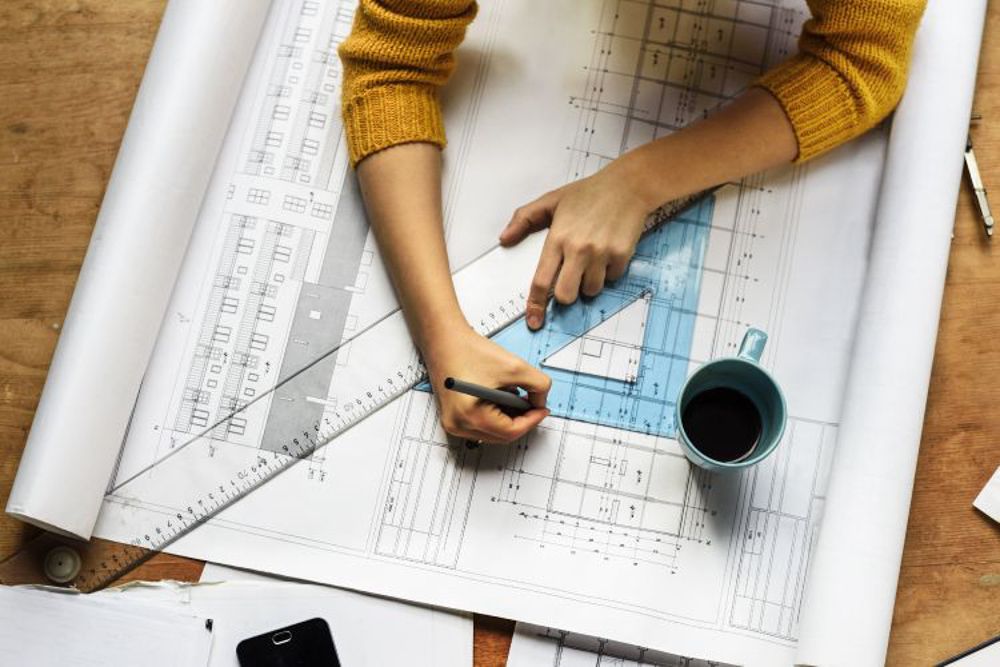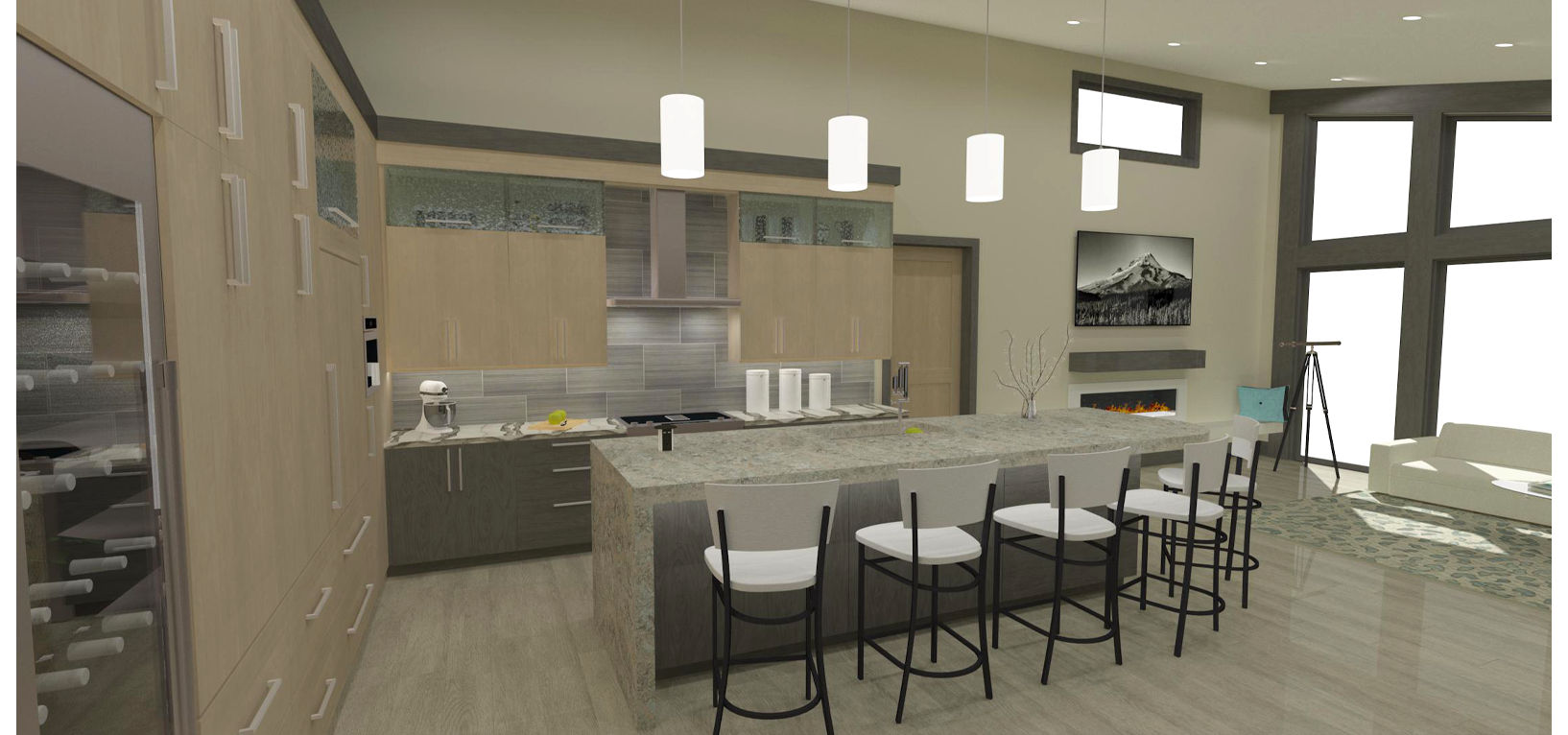Explore the Expertise of Hampshire Architects for Unique Residential Projects
Explore the Expertise of Hampshire Architects for Unique Residential Projects
Blog Article
Making Best Use Of Visual Charm: The Harmony In Between Interior Design and Home Engineer Methods
Comprehending the subtle interplay between indoor layout and home design can dramatically raise the aesthetic allure of a space. This marital relationship of style disciplines entails a thoughtful combination of architectural components with interior formats, and a skilled application of concepts such as contrast, rhythm, and balance. As we explore this harmony, we will reveal methods to produce visually striking and useful environments that not just show individual design, yet likewise adjust to the dynamic demands of modern living.
Recognizing the Fundamentals: Specifying Interior Design and Home Design
Interior style and home design, commonly linked, stand for the aesthetic and structural facets of our living areas. Interior design is a complex technique that entails developing functional, safe, and aesthetically pleasing spaces inside a structure. On the various other hand, home design mainly concentrates on the strong structure of a building.
The Synergy Explained: Exactly How Interior Decoration and Home Architecture Intersect
Understanding the harmony in between indoor layout and home style can open a world of creative thinking and functionality. The influence of architecture on interiors is an essential aspect to take into consideration when reviewing this crossway - Luxury home architect. This discussion will concentrate on the unifying style principles that blend these two areas into an unified whole
Unifying Design Principles
While it might appear that interior layout and home design are two distinct techniques, they are really deeply interconnected, forming a synergy that is important for creating unified space. Unifying style concepts are the columns that facilitate this synergy. The principles consist of balance, rhythm, consistency, focus, and contrast. These components coalesce to give a cohesive visual allure. Balance produces a feeling of stability, rhythm supplies a feeling of movement, harmony makes certain unity, contrast stimulates passion, and emphasis draws focus to crucial elements. The tactical application of these principles makes it possible for a smooth blend of looks and feature, enhancing the total experience of the room. In essence, these principles offer as the bridge, unifying indoor layout and architectural methods.
Architectural Influence on Interiors
The intertwining of interior layout and architecture becomes even much more evident when one takes into consideration the architectural influence on insides. Building components are inherent to an area's performance and visual appeals, shaping the design from the onset. Columns, staircases, arches or beam of lights, for circumstances, offer both structural and attractive objectives. They can separate rooms, produce centerpieces or imbue an area with a details vibe. Consideration of appearance, proportion, and light likewise originate from architectural influences. Ultimately, architecture molds the canvas whereupon interior designers work. Their harmony is thus obvious: style establishes the structure, which interior style boosts with shade, design, and structure. This cooperative connection makes sure a harmonious equilibrium in between function and elegance, enhancing the visual allure of any type of area.
Trick Principles in Balancing Interior Design and Home Style
Striking an equilibrium in between performance and appearance is an essential facet of integrating indoor layout and home design. A just as vital principle is the integration of sustainable style to produce energy-efficient and green homes. Understanding and checking out various building styles can additionally play an essential role in achieving an unified style. Luxury home architect.

Balancing Performance and Appearance
Balancing performance and aesthetic appeals in indoor design and home architecture emerges as one of the paramount principles to consider. This delicate equilibrium needs a careful mix of functionality and appeal, intending to create areas that are not only visually pleasing yet likewise serve their intended objective effectively. Aesthetic appeal boosts the mood and impacts the assumption of space, whereas performance makes certain use and convenience. Trick to this equilibrium is a thoughtful selection of aspects such as texture, lights, and color, which need to complement each other while offering their specific functions. Equally essential is the efficient setup of the room, with a well-planned format adding considerably to the synergy between capability and looks. This harmonious mix ultimately improves the lifestyle for the owners.
Sustainable Style Integration
In preserving the stability between performance and looks, one have to additionally take over here into consideration the combination of sustainable style concepts. This approach not just boosts the aesthetic charm of an area but also ensures its long life and minimized ecological effect. An unified blend of indoor layout and home style, guided by sustainability, can create rooms that are stunning, functional, and ecologically pleasant.
Checking Out Architectural Styles
While there are a huge selection of building designs to discover, it is important to understand that each one lugs its one-of-a-kind concepts that can dramatically influence the harmonization of interior design and home style. These styles, varying from the luxuriant Baroque to the minimalist Modernist, carry distinctive viewpoints and appearances that, when effectively understood and utilized, can produce homes that are not only visually spectacular yet additionally harmoniously integrated in terms of layout and design. Choosing an architectural design is not merely concerning personal visual choice; it is concerning picking a style language that speaks with the house owner's way of living, approach, and goals, creating a home that is a real representation of its residents.
Situation Studies: Remarkable Examples of Style and Design Synergy
Delving right into some phenomenal study gives a profound understanding of exactly how design and style can sympathetically merge to produce compelling and functional areas. The renowned Fallingwater home, designed by Frank Lloyd Wright, exceptionally demonstrates this harmony. Wright's style masterfully integrates your house with its surrounding landscape, while the interior mirrors the outside's organic kinds. An additional instance is the minimalistic Tadao Ando's Church of Light in Japan. The engineer accomplished a perfect equilibrium between simplicity and drama, utilizing raw concrete and light. Internally, the raw, marginal style develops a feeling of serenity and spiritual reflection. These examples illustrate the relevance of harmony between interior layout and style in achieving visual and useful success.
Practical Tips: Enhancing Your Home's Visual Allure
Attracting inspiration from the case research studies of building and style harmony, home owners too can implement some practical strategies click to investigate to improve their home's visual appeal. A harmonious mix of colors, textures, and lighting can improve a space, producing a warm and welcoming ambience. Deciding for furniture that enhances the building components of your home can foster a feeling of unity. Wall surface art and decor items can add personality, showing personal design and taste. Including plant, either through interior plants or sights to the outdoors, can bring an aspect of nature, delivering a calming impact. Creative use of mirrors can open up a space, giving an illusion of a bigger location. Ultimately, the aesthetic appeal lies in stabilizing capability with design, developing a home that is both comfortable and gorgeous.

Future Patterns: Just How Modern Techniques Are Changing Interior Design and Architecture
As the world progresses, so do the fads in interior design and style. Modern techniques are significantly concentrating on sustainability, including energy-efficient styles and eco-friendly materials. Modern technology plays a crucial duty, with wise homes coming to be the standard, incorporating AI and IoT for enhanced functionality. Furthermore, minimalism continues to gain grip, stressing simplicity, capability, and clutter-free spaces. This is commonly coupled with biophilic design, attracting inspiration from nature and advertising wellbeing. Additionally, the pandemic has actually sped up the demand for versatile, multi-purpose areas, obscuring the lines between job and home. These fads reflect a change towards styles that are not simply cosmetically pleasing, but likewise environmentally aware, technologically advanced, and versatile to changing way of lives.
Conclusion
In conclusion, the assimilation of interior decoration and home design techniques is a vibrant strategy to enhancing aesthetic appeal. By leveraging vital concepts like rhythm, contrast, and equilibrium, and including aspects of modern-day living, developers can create functional, aesthetically pleasing click to find out more environments. Via recognizing this synergy, homeowners can make enlightened decisions that not only boost their home however additionally add to their overall health.
Comprehending the refined interaction between indoor style and home architecture can dramatically raise the visual charm of a living space.Indoor design and home design, commonly intertwined, stand for the aesthetic and architectural aspects of our living rooms.While it may appear that interior style and home architecture are two distinctive self-controls, they are in fact deeply interconnected, forming a harmony that is necessary for creating harmonious living rooms.The intertwining of interior style and style ends up being even more obvious when one takes into consideration the building influence on insides. An unified fusion of indoor style and home architecture, assisted by sustainability, can develop areas that are stunning, useful, and environmentally friendly.
Report this page